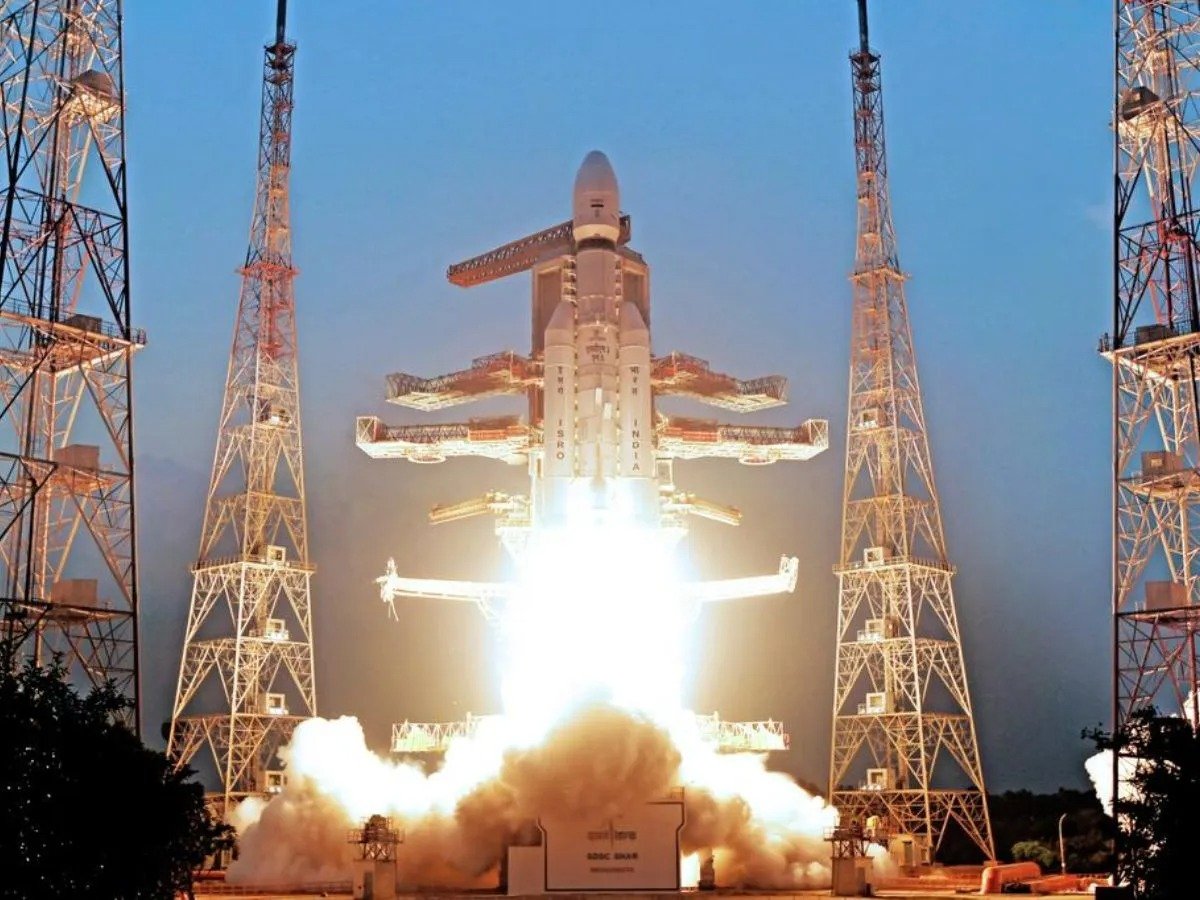New Delhi: The Indian Space Research Organisation (ISRO) has achieved another remarkable milestone in its space journey by successfully launching its heaviest-ever communication satellite, CMS-03. The satellite was launched from the Satish Dhawan Space Centre, Sriharikota, Andhra Pradesh, at 5:26 PM using the indigenously developed “Bahubali” rocket LVM3-M5. Weighing approximately 4,400 kilograms, CMS-03 is India’s most massive communication satellite to date.
The LVM3 rocket, often referred to as India’s most powerful launch vehicle, stands about 43.5 meters tall—equivalent to a 15-storey building. It operates in three stages: in the first stage, 5,200 boosters provide a powerful thrust during liftoff; the second stage uses an L110 liquid engine to accelerate the rocket further; and in the third stage, the C25 cryogenic engine places the satellite precisely into its designated orbit.
According to ISRO, CMS-03 will enhance mobile networks, internet connectivity, television broadcasting, and maritime communication across India and the surrounding oceanic regions for the next 15 years. The mission is being hailed as a milestone in strengthening India’s digital and strategic infrastructure.
Key Benefits of CMS-03
- Boosting Digital Connectivity: The satellite will expand mobile, TV, and internet coverage to remote villages, hilly terrains, and offshore areas, ensuring improved digital access across every corner of the country.
- Enhancing Education and Healthcare: By bridging the digital divide, it will facilitate online education and telemedicine services in areas lacking schools, colleges, or hospitals.
Support During Emergencies
During natural disasters such as floods, cyclones, or earthquakes, the satellite will ensure uninterrupted communication. It will assist rescue and relief teams with real-time data and coordination. Moreover, it will significantly strengthen naval and coastal security, enabling real-time communication for Indian Navy ships, submarines, and aircraft — thereby improving maritime surveillance and operational precision.
Symbol of Self-Reliance and Global Recognition
Most importantly, India has now become capable of launching its own heavy satellites, reducing dependence on foreign agencies. This achievement marks India’s emergence as a key player in the global space market. ISRO scientists have described the mission as a historic step toward India’s digital security and technological self-reliance.



